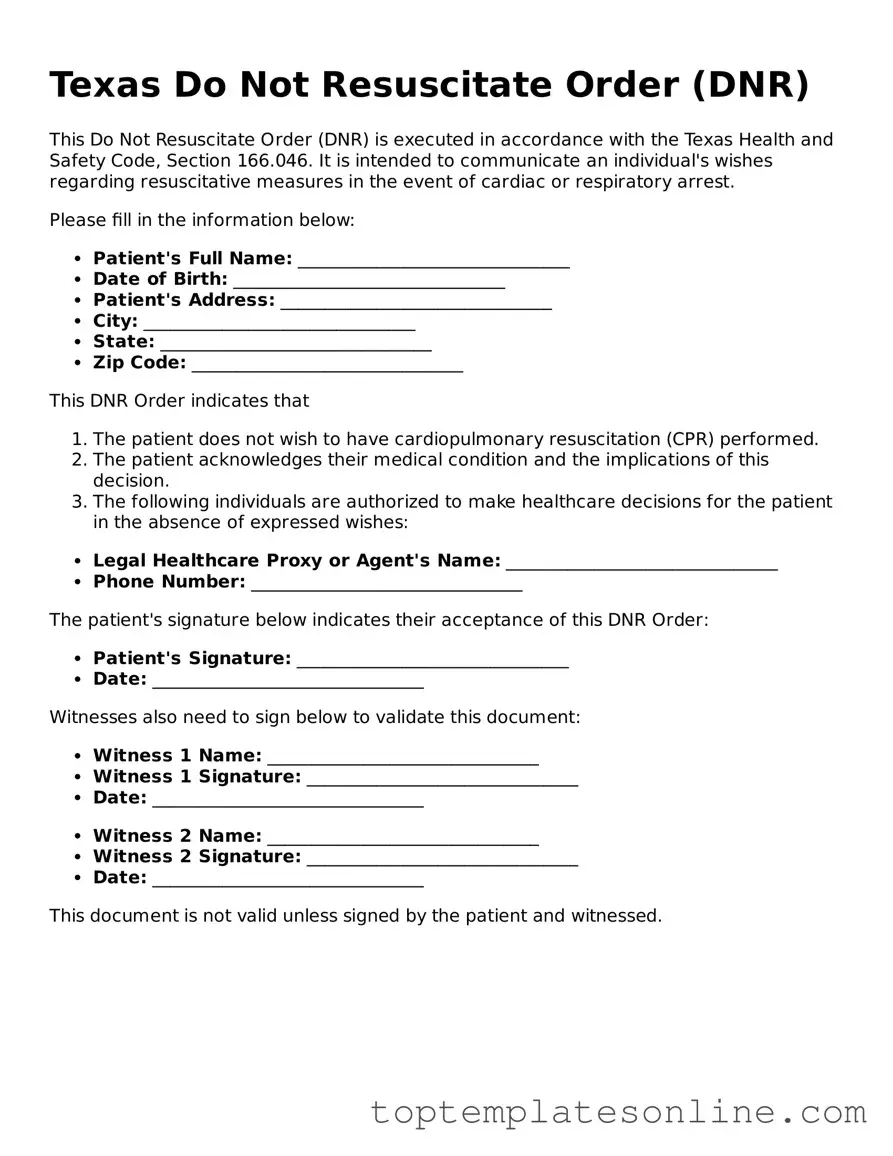Blank Do Not Resuscitate Order Template for Texas State
A Texas Do Not Resuscitate Order (DNR) form is a legal document that allows individuals to express their wishes regarding resuscitation efforts in the event of a medical emergency. By completing this form, a person can indicate that they do not want CPR or other life-saving measures if their heart stops or they stop breathing. Understanding this form is crucial for patients, families, and healthcare providers to ensure that medical care aligns with the individual's preferences.
Customize Do Not Resuscitate Order Here
